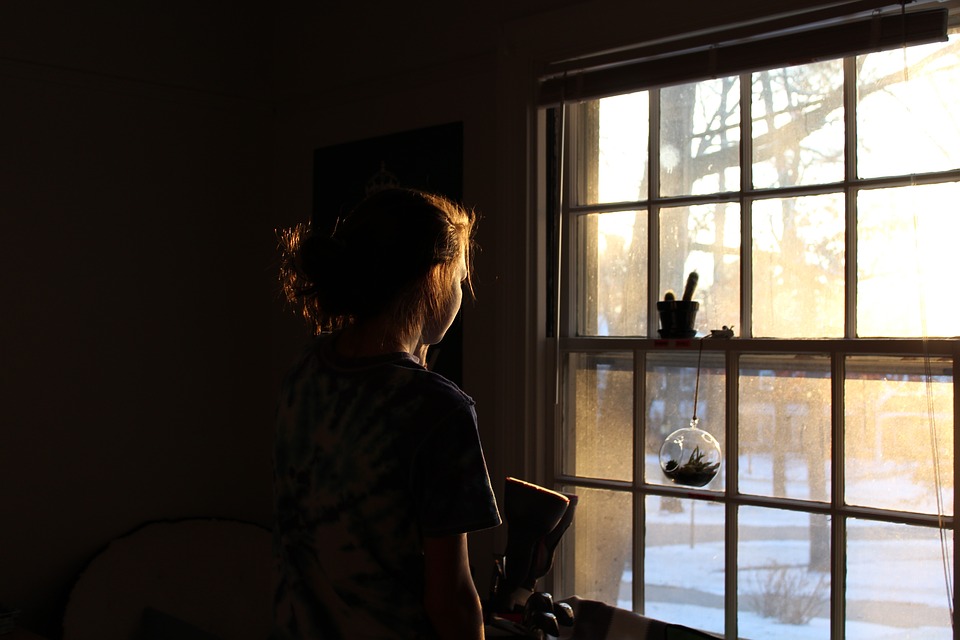A Contemplative Pause: Practice for Learning and Living
 Self-reflection, practicing gratitude, and noticing dispositions can be transformative in teaching and in life. During this Thanksgiving season, Karolyn Kinane gives us pause to contemplate “how we are being with each other.” Kinane is Associate Director of Faculty Engagement and Pedagogy, Contemplative Sciences Center at the University of Virginia.
Self-reflection, practicing gratitude, and noticing dispositions can be transformative in teaching and in life. During this Thanksgiving season, Karolyn Kinane gives us pause to contemplate “how we are being with each other.” Kinane is Associate Director of Faculty Engagement and Pedagogy, Contemplative Sciences Center at the University of Virginia.
We welcome your thoughtful comments below.
When teaching or taking a class, do you find yourself thinking about what you will teach or learn? Similarly, when getting together with friends or family, do you spend time planning what you will do with your time together? What might happen if you shifted your attention from what you should do to how you want to be?
Every November I visit my family for nearly a week. Let me first say that I recognize the incredible amount of privilege that allows me to visit my family, and I am grateful to have a family that is, at its core, loving and supportive. Nevertheless, over the years I used to struggle a bit during these visits. I would start with good intentions—with all kinds of goals about what my family and I would do together and, specifically, what I would do to make it a good visit. But after a few days, I would get cranky and reactive as I felt us falling back into old habits and patterns of behavior. I would feel very little agency during the visits, and after the visits were over, I would regret my behavior.
A few years ago, however, I shifted my intentions from what I wanted to do on these visits to how I wanted to be. Now when I prepare for my annual visit, I choose a word or two to remind me of my values when I feel my tension levels rising. For example, last year I chose “calm and warm.” While with my family, as I noticed myself getting tense, I would pause and return to this intention of being calm and warm. I would feel my reactivity defuse, and it was much easier for me to decide what to do in a way I could be proud of because whatever I did do, I would do it calmly and warmly.
In order to share this intention with those I love, I also engage in gratitude practice. It is not enough to have an “attitude of gratitude” or to “think good thoughts” all by myself in my own head. Practicing gratitude with others through words and actions increases happiness and strengthens relationships. And this year, in particular, I am feeling a little ungrounded from a big move and job change. I miss my family terribly and feel distant from them emotionally as well as physically. And so this visit, my value words will be “grateful and connected.” I want to be grateful and connected, whatever that looks like. I can’t anticipate what will happen, but I can commit to how I want to be.
Here at the Contemplative Sciences Center, we work with faculty across Grounds to create classroom activities and assignments that require students to slow down and notice how they are being with a text, person, or situation. As they read, discuss, interview, or study, students are invited to notice: Am I being competitive, flippant, judgmental, curious, or open-minded? And then inquire: What does this situation call for? How do I want to be? Equipped with that knowledge, students then have a choice; they can decide what to do in a way that is aligned with their values rather than unthinkingly reacting from habit or imagined expectations.
I became very interested in how students were reading, thinking, and speaking with one another while I was an English professor in New Hampshire nearly a decade ago. I began paying attention not only to what my assignments asked of students but also to how they asked students to be—to the mindsets and attitudes these assignments and activities cultivated.
I noticed I was continually demanding that students be critical, vigilant, and suspicious of arguments without helping them to develop the complementary habits of patience, curiosity, and generous thinking—habits that I believed could make life a little easier and the world a little kinder. After some research and much soul-searching, I eventually reoriented my teaching and students’ learning so that we could practice contemplation—a habit of mind that complements and supports both critical thinking and creative expression.
One way to think about contemplation is as a pause or gap between a stimulus and a response. For example, when I get stressed, I tend to work on autopilot: I react swiftly to stimuli (such as emails, texts, or a biting comment from a relative) and unleash some reactions I am not proud of. We humans seem to be hardwired for a negativity bias, finding it easy to focus most of our attention on the upsetting things people do. It takes practice to notice the positive and bring it to light. It can take as many as five positive words or actions to counteract the effects of a single negative comment.
A contemplative pause—a moment to breathe, a quick walk around the block—helps me more objectively notice what is happening externally (this person is making a request) and internally (I’m feeling resentful) and consider how or whether I want to respond.
 This contemplative gap or pause wherein we consider and reflect before acting can be as brief as a few moments or as long as a few hours, days, or even years.
This contemplative gap or pause wherein we consider and reflect before acting can be as brief as a few moments or as long as a few hours, days, or even years.
Mindsets and attitudes– dispositions– are present within nearly every student and classroom but often they are ignored or actively dismissed as “merely” affective responses that get in the way of serious learning. I (and others) contend that the practice of noticing and working with disposition is a key part of transformative education. Additionally, inviting inquiry into attitudes, expectations, and how we are being with each other can help students —and the rest of us, I think—live with a greater sense of agency, resilience, and kindness.
- A Revolution in the Air: The Wright Brothers Take to the Sky on December 17, 1903
- Musings on National Violin Day
- Making the Promise Real: How a UN Tax Convention Can Fulfill the UNDHR’s Vision
- UVA Club of Atlanta: Virtual Pilates Class
- Virginia Club of New York: Annual Book Club Planning Meeting
- UVA Club of New Orleans: Hoo-liday Party

